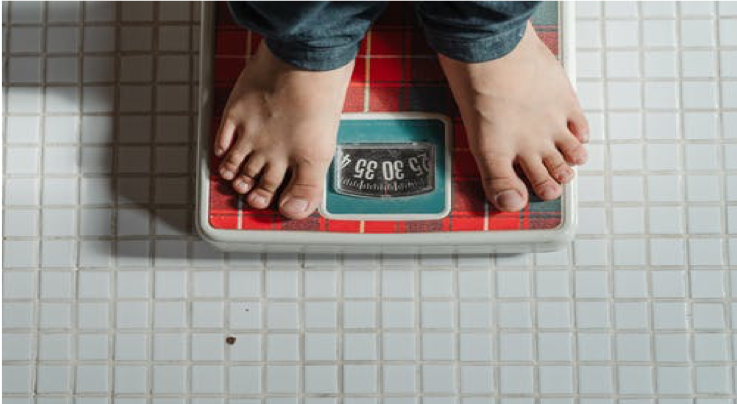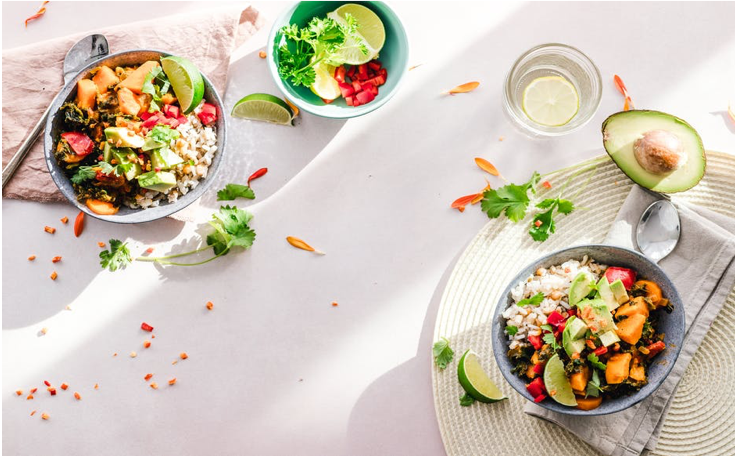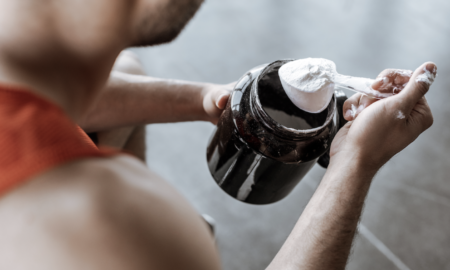

Bulking and cutting are two phases that are necessary for every bodybuilder. The cutting phase involves consuming less than your normal caloric intake to lose some body fat. On the other hand, bulking involves consuming more than your normal caloric intake to gain more muscle mass. However, not everyone knows how to bulk right. This article will teach you how to create a bodybuilding diet that you would love.
When you eat anything and everything in sight, it is called “dirty bulking”. This is because as you consume all those foods, you might gain some muscle mass, but that will come with substantial extra fat, which your body doesn’t even need!
The way to go is “clean bulking” because, in this case, you are getting clean fuel from the right foods transferred into your muscle, causing an increase in muscle mass (and not an increase in body fat).
However, remember that aside from diet and nutrition, other factors such as age, genetics, and training can also influence how much muscle you gain within a given duration of time.
How to calculate caloric intake for your body
A calorie is a unit for measuring energy. Calories are important to bodybuilders because they are used to measure the energy content of foods and drinks.
Suppose you are overweight and want to start bodybuilding. First, you have to lose some weight (fat), and you achieve weight loss by eating fewer calories than your body burns daily.
But, the question many people ask is, “How do I know how many calories my body needs in the first place?” You know how many calories you should eat on average by calculating the caloric intake for your body.

Note that average caloric intake differs from individual to individual and depends on different factors such as current weight, height, age, gender, metabolic health status, and physical activity level, among others.
Here is a step-by-step guide on how to calculate the daily caloric need for your body.
Step 1: Find your weight in Kg (if it is in pounds, simply divide it by 2.2 to get your body weight in Kg).
Step 2: If you are a man, multiply your weight by 1.0 but if you are a woman, multiply it by 0.9 (remember gender is a factor).
Step 3: Multiply by 24
Step 4: Multiply again by your lean factor (as shown in the tables below) to get your basal metabolic rate.
For men
| Body fat percentage | Lean factor multiplier |
| 10-14 | 1.0 |
| 15-20 | 0.95 |
| 21-28 | 0.90 |
| Over 28 | 0.85 |
For women
| Body fat percentage | Lean factor multiplier |
| 14-18 | 1.0 |
| 19-28 | 0.95 |
| 29-38 | 0.90 |
| Over 38 | 0.85 |
Note: Your gym or fitness trainer can help you calculate your body fat percentage. Otherwise, you can also use an online calculator to find out your body fat percentage.
Example: If you are a female and you weigh 62kg with a body fat percentage that falls between 19-28, to calculate your basal metabolic rate:
62 × 0.9 (female) × 24 ×0.95 (the lean factor multiplier for my body fat percentage) = 1,272
1,272 is the number of calories your body would burn daily if you were to lay on the bed throughout the day doing nothing. This figure is also called the Basal Metabolic Rate (BMR).
Now, the last step after finding your BMR is to find out how many calories your body burns in a day.
Step 5: Multiply your BMR by your ‘activity modifier’. This is a measure of how active you are (check the table below).
| Activity level multiplier | Level of activeness |
| 1.3 | Very light e.g. typical office job, studying, sitting, light walk all-day |
| 1.55 | Light e.g. a job that requires standing e.g. teaching and lab work |
| 1.65 | Moderate e.g. jobs that require physical activity like cleaning, landscaping, biking. Also equivalent to 2 hours work out per day |
| 1.80 | Heavy e.g. heavy manual jobs like construction, engine manipulation, athlete, hard physical activity for about 4 hours a day |
| 2.0 | Very heavy e.g. moderate to hard physical activity, for up to 8 hours a day |
If, for instance, your activity modifier falls within the light category, multiply your BMR by your activity modifier to find out your daily caloric need.
i.e. 1272 × 1.55 = 1,972
Another easy way to calculate your calorie need is to use an online calorie calculator. Knowing how many calories you need to burn in a day is one of the first steps for every fitness journey. The next step would be to determine whether you want to gain or lose weight.
If you want to gain weight, that means you have to consume more calories than your body burns in a day (about 500 calories more). If you want to lose weight, you have to eat fewer calories (about 500 calories less) than your body burns daily.
How to calculate macros
Macro is a short form for macronutrients. Macronutrients are the primary nutrient types that provide the body with the energy to function optimally.
Healthy eating goes beyond counting calories; it also involves eating various nutrients in a balanced proportion. To create an effective bodybuilding diet, you have to track macronutrients.
Unlike the micronutrients like vitamins and minerals, the body needs macronutrients in larger amounts. There are three macronutrients, namely carbohydrates, proteins, and fats. You need all three for the normal function of your body cells. But how many of these macros should you eat, and how do you calculate them?
We differ in our body composition and body needs. However, a study review provided recommended percentages of each macronutrient to consume. According to the review, you should obtain:
- 15-20% of the calories you eat from fats
- 25-30% of the calories you eat from proteins
- 55-60% of the calories you eat from carbohydrates
You should also note that each of the macronutrients offers a specific calorie per gram.
- Proteins offer four calories per gram
- Carbohydrates offer four calories per gram
- Fat offers nine calories per gram
To calculate how much of each macro you should consume, you take the corresponding percentage in line with your daily caloric need.
For instance, since we already calculated that your daily caloric need is 1,972 (an example), the amount of fat you should consume should be between 15-20% of your daily caloric need.
First, convert 1,972 calorie to gram (nine calories of fat corresponds one gram) = 1972\9
=219
15% of fat = (15\100) × 219
=33
20% of fat = (20\100) × 219
=44
This means your daily meal should contain 33-44 grams of fat daily (i.e. 15-20 of your total daily calories).
Best foods for muscle building

You need the three macronutrients to build your muscles. However, even after learning how to calculate caloric needs and macros, some people still have the challenge of how to source the macronutrients.
Below are the best bodybuilding food sources for each of the macronutrients.
Fat sources for muscle building
- Healthy and fatty fish like salmon, tilapia, tuna, shrimp, sardines, trout mackerel
- Avocado
- Healthy oils like safflower oil, olive oil, sunflower oil, sesame oil, peanut oil, soybean oil
- Seeds and nuts, e.g. flaxseed, walnuts, chia seeds
Protein sources for muscle building
- Poultry (particularly chicken breast and turkey breast)
- Fish
- Shrimp
- Dairy, e.g. milk and cheese
- Lean meat
- Black, pinto, and kidney beans
- Egg
- tofu
- Legumes
- Greek yogurt
- Seeds and nuts
Carbohydrate sources for muscle building
- Leafy vegetables
- Starchy vegetables
- Whole grains, e.g. brown rice, oatmeal, cereals, buckwheat, popcorn, quinoa
- Fruits that support weight maintenance like watermelon, apples, bananas, berries, oranges, grapes, pineapples, kiwi fruits, pomegranates
Supplements for bodybuilding diets
For bodybuilders, the following supplements might help you gain more muscle, especially when you incorporate them into your bodybuilding exercise and diet program.
Protein supplements
Protein is the key macronutrient for building and maintaining all tissue types, including the muscles. Protein supplements containing amino acids are available as shakes, capsules, and bars. You can buy them online or over-the-counter.
Protein supplements help promote muscle mass growth, aid metabolism, enhance performance, and improve recovery. You can take them before, during, or after training or even add them to your meals.
Citrulline Malate (CM)
CM was originally termed an “anti-fatigue” supplement. It was originally used for treating post-surgery fatigue. However, nowadays, it has gained more popularity for its performance-boosting effects. The combination of malate and L-citrulline in this supplement helps increase adenosine triphosphate (ATP) rate during workouts.
Creatine Monohydrate
Creatine supplements work by increasing the presence of creatine and phosphocreatine (PCR) in the muscle cells. Creatine and PCR help in energy maintenance during high-intensity exercises such as weightlifting.
Long-term use of creatine supplements might also improve the quality of resistance training and cause up to a 15% increase in strength and performance.
Branched Chain Amino Acids (BCAAs)
BCAAs are among the supplements recommended for bodybuilders. Asides from their delicious taste, studies have shown that they may help speed up recovery and tissue repair after a heavy workout.
Glutamine
Glutamine is a nonessential amino acid. While its supplement might not cause magical muscle growth, it plays an important role in muscle repair and recovery. It works by getting rid of the excess ammonia that accumulated while you are doing an intense workout. Therefore, bodybuilders who engage in high-intensity and heavy resistance training may benefit from glutamine supplementation.
Be careful when choosing new supplements. You want to make sure you’re not only receiving quality but that your supplements are safe for natural bodybuilding. Click here to learn more about vitamins and supplements.
How to enjoy your diet
Bodybuilding diet focuses on healthy whole meals such as vegetables, healthy fats, proteins, whole carbs, fruits. The fact that you are required to cut out refined carbs, sweeteners, and junks might make your meals seem unappealing, but who says you can’t enjoy your food without those junks?
Here is how to enjoy healthy eating.
- Love what you eat; it is beneficial for your fitness journey
- Replace the sweetened beverages with homemade juice or smoothies
- Prepare vegetables to be tasty (you can stir-fry it with egg, tomato, and some seasonings)
- Incorporate fruits into your meals
- Have a cup of smoothie handy; it can go with different meals
- Don’t force new foods on yourself; gradually introduce healthy meals while you discard the unhealthy ones
- Make your meals more appealing by giving your recipes a delicious makeover
- Incorporate healthy proteins into your meals (proteins like chicken, turkey, egg, and cheese can make you look forward to mealtime
- Make mealtimes fun with your family; it should not be gloomy
- Drink lots of water or any calorie-free beverage
Conclusion
When it comes to building muscle, bombarding your body with excess calories does not help. Doing that will only cause unwanted fat build-up. Bulking right will do the trick. Start with calculating your body caloric intake, calculate the corresponding macronutrient, and stick with a balanced meal plan and workout routine. In this way, you build lean muscle mass over time.






















You must be logged in to post a comment Login